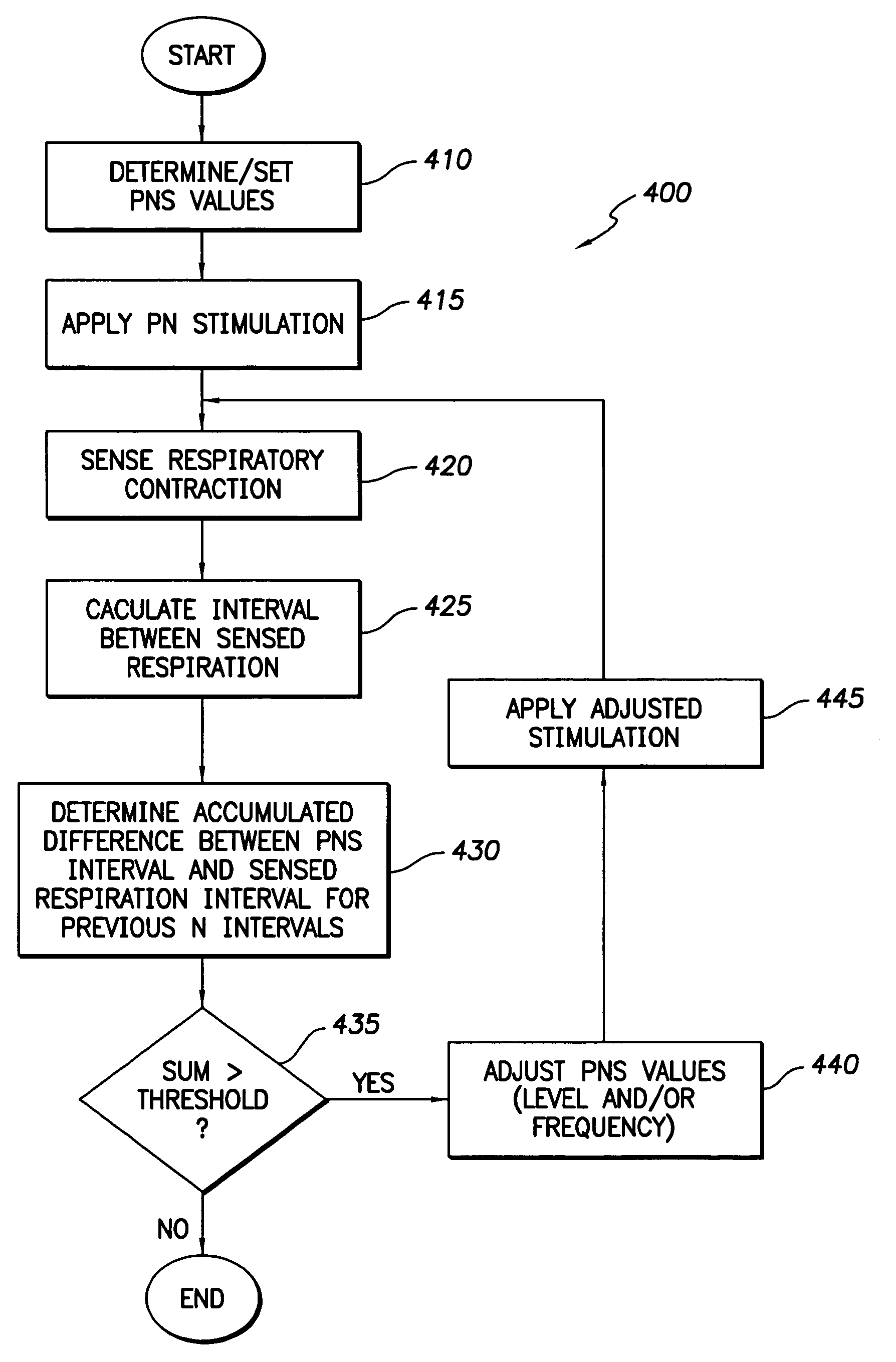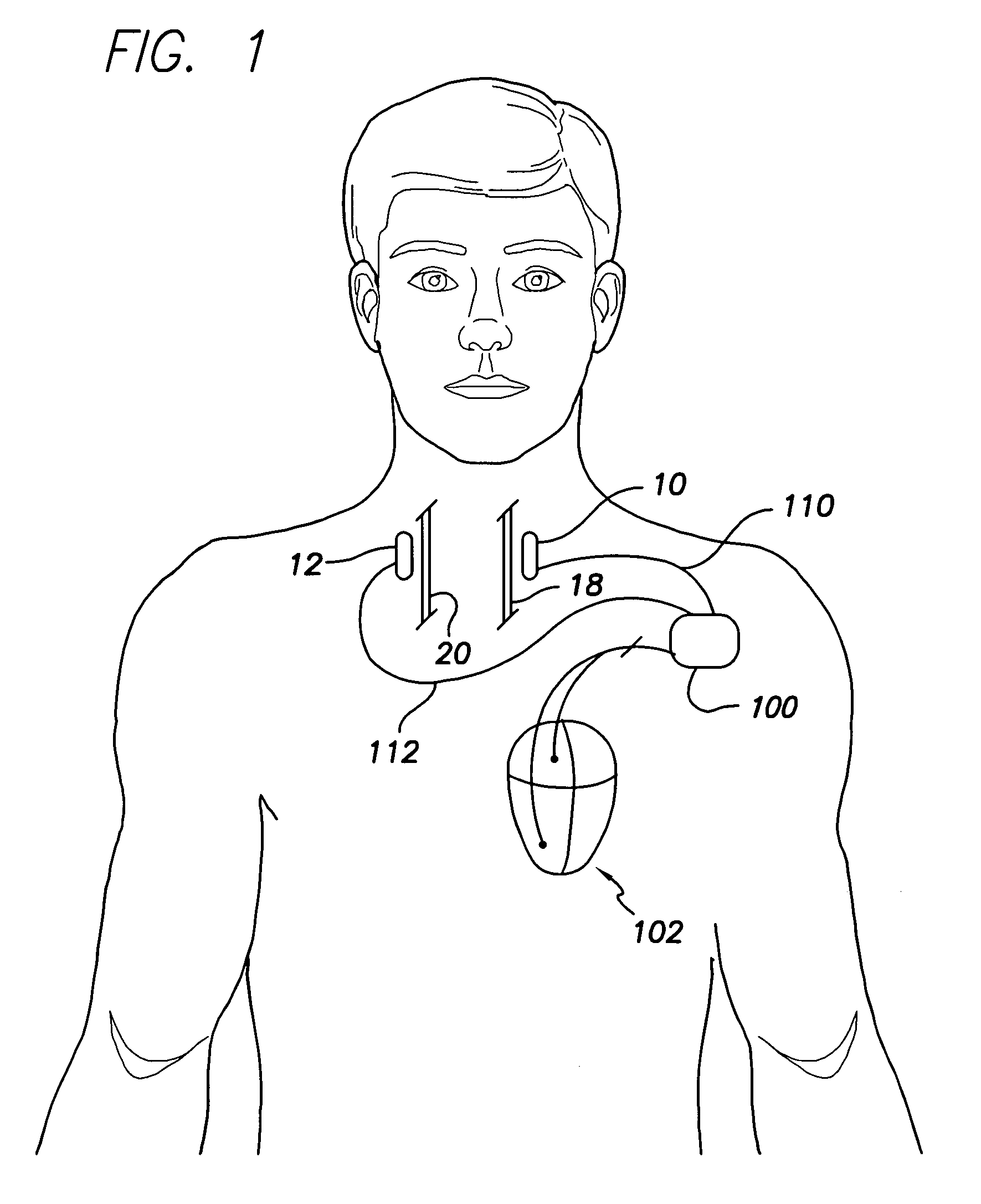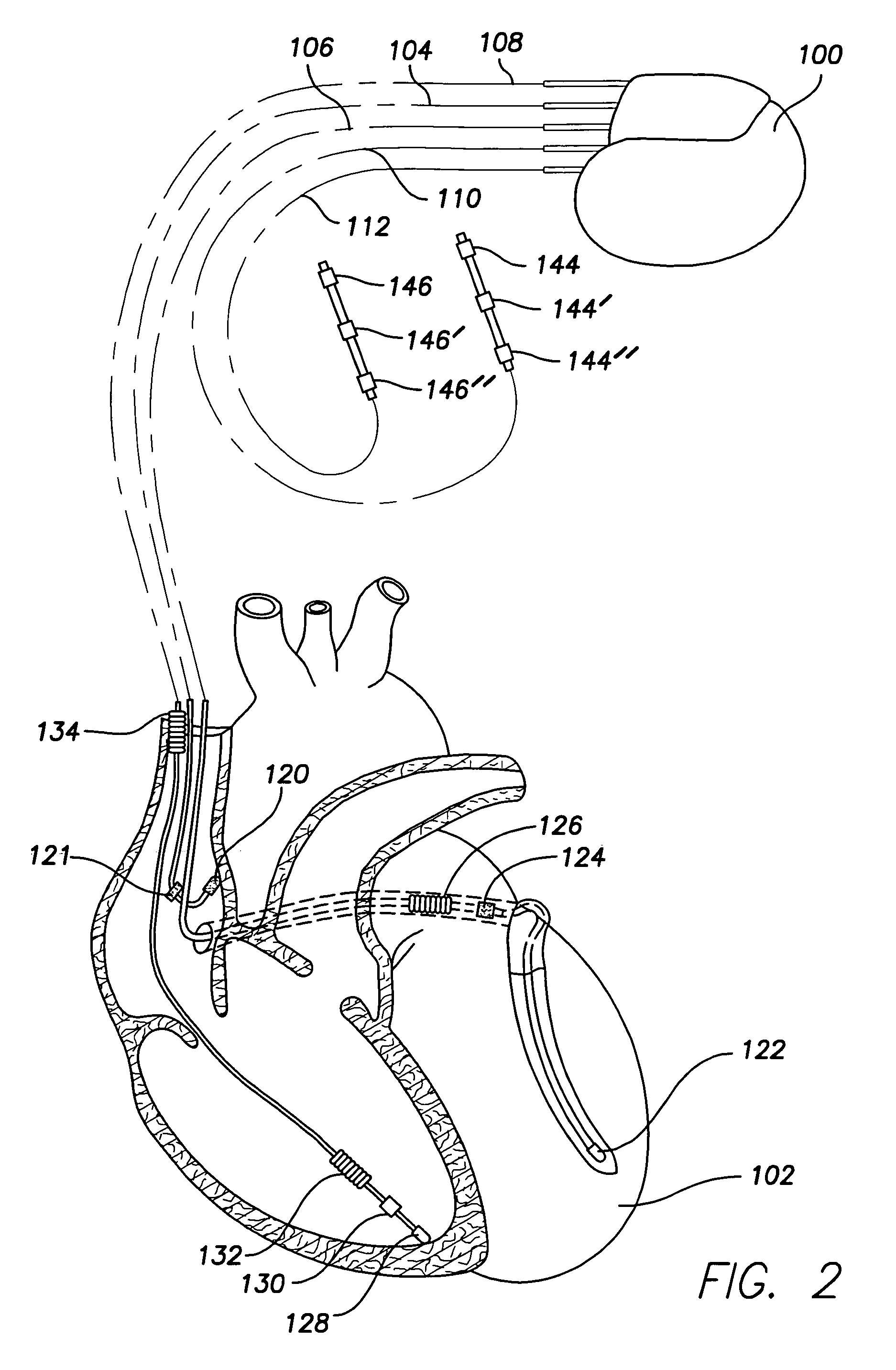Capture verification in respiratory diaphragm stimulation
a technology of diaphragm and capture verification, which is applied in the field of implantable therapy devices, can solve the problems of compromising the person's already unstable sleeping session, affecting the patient's sleep,
- Summary
- Abstract
- Description
- Claims
- Application Information
AI Technical Summary
Benefits of technology
Problems solved by technology
Method used
Image
Examples
Embodiment Construction
[0013]FIG. 1 is a diagram of a person in which a device 100 is implanted in his body. The implantable therapy or monitoring device 100 is used to treat sleep apnea and other conditions, such as tachycardia. Also implanted in the person's body are phrenic nerve stimulators 10 and 12 positioned near the person's phrenic nerves 18 and 20, respectively. The device 100 is in communication with the phrenic nerve stimulators 10 and 12 via leads 110 and 112, respectively, for sensing the presence of stimuli and / or delivering stimuli to the phrenic nerves 18 and 20 to help the person breathe (e.g., in response to detection of sleep apnea), according to one or more embodiments disclosed herein. The device 100 is also in communication with leads implanted in one or more chambers located in a patient's heart 102, such as the left ventricle, left atrial, right ventricle, and / or right atrial (only two leads are shown). In one or more embodiments disclosed herein, the device 100 senses signals loc...
PUM
 Login to View More
Login to View More Abstract
Description
Claims
Application Information
 Login to View More
Login to View More - R&D
- Intellectual Property
- Life Sciences
- Materials
- Tech Scout
- Unparalleled Data Quality
- Higher Quality Content
- 60% Fewer Hallucinations
Browse by: Latest US Patents, China's latest patents, Technical Efficacy Thesaurus, Application Domain, Technology Topic, Popular Technical Reports.
© 2025 PatSnap. All rights reserved.Legal|Privacy policy|Modern Slavery Act Transparency Statement|Sitemap|About US| Contact US: help@patsnap.com



